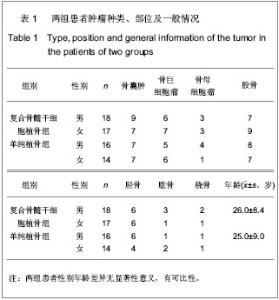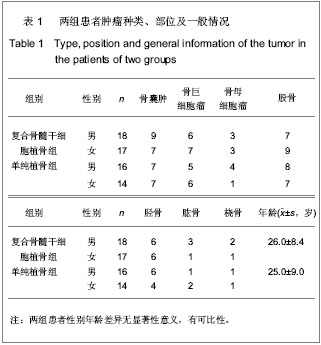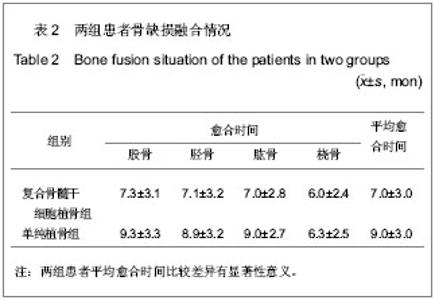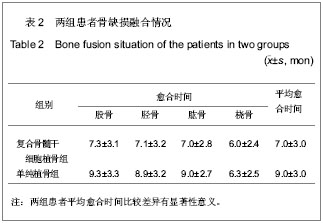| [1] Pittenger MF, Alastair MM, Stephen CB, et al. Multilineage potential of adult human mesenchymal stem cells. Science. 1999;284(5411):143-147.[2] Prockop Dj. Marrow stromai cells as stem cells for nonhematopoietic tissues Science.1997,76(4)71-41.[3] 周志玲,袁进国,刘英飞,等.自体骨髓干细胞移植治疗骨不连[J].中国临床康复杂志,2006;10(29):22-23.[4] Jorgenson SS,Lowe TG,France J,et al.A prospective analysis of auto graft versus allograft in Posterolateral lumbar fusion in the same patient.Spine.A minimum of 1-year follow-up in 144 patients.Spine.1994;19(18):2048-2053. [5] 刘英飞,仉建国,陈云庆,等.原位自体骨与同种异体骨混合植骨在脊柱侧弯矫形融合术中的应用[J].中国组织工程研究与临床康复, 2007,11(51):10374-10375.[6] 徐万鹏,冯传汉.骨科肿瘤学[M].北京:人民军医出版社,2008: 265-269[7] 胥少汀,葛宝丰,徐印坎.实用骨科学[M].北京:人民军医出版社,2005:1885~1896[8] 李冀,张育敏,王专强,等.骨组织工程支架材料合成技术的进展[J].中华创伤骨科杂志,2006;12(8):773.[9] 刘振江.自体骨髓注射治疗骨不连和骨延迟愈合的现状[J].中国矫形外科杂志,2003,11(4):254.[10] 梁雨田,张伯勋,卢世璧,等.经皮自体骨髓移植在骨缺损瘢痕组织内成骨作用的试验研究[J].中国修复重建外科杂志,1999,13(3): 1478.[11] 梁雨田,张伯勋,卢世璧,等.经皮自体骨髓移植治疗骨折不愈合[J].中华骨科杂志,1999.9(12):709-711 [12] 周红星,郭红先,杨红彬.异种完全脱蛋白骨复合自体红骨髓体内的异位成骨能力[J].中国临床康复,2005,9(6):192-194.[13] Pittenger MF, Mackay AM, Beck SC, et al. Multilineage potential of adult human mesenchymal stem cells. Science. 1999;284(5411):143-147.[14] Shi XM, Blair HC, Yang X, et al. Tandem repeat of C/EBP biding sites mediates PPARgamma2 gene transcription in glucocorticoid-induccd adipocyte differentiation.J Cell Biochem.2000;76(3):518-527.[15] 朱肖奇,贺用礼,马雪峰,等. 生物衍生骨与骨髓间充质干细胞复合修复兔桡骨大段缺损[J]. 中国组织工程研究与临床康复, 2009,13(3):417-422. [16] 李树宝,潘锋,白欣,等.壳聚糖介导真核双表达质粒pIRES- hVEGF_ (︱2︱)cDNA/hBMP-4转染兔骨髓间充质干细胞向成骨细胞分化[J].中国组织工程研究与临床康复,2009, 13(1): 129-132. [17] 谢涛,尚希福,孔荣,等.移植骨复合骨髓基质干细胞修复兔股骨缺损[J].临床骨科杂志,2007,10(6):552-555. [18] 傅明,梁海翔,何爱珊,等.异体骨结合骨髓间质干细胞移植治疗骨缺损的动物实验[J].中山大学学报:医学科学版,2007,28(5): 515-519,572.[19] 江标,李明.骨组织工程中骨髓间充质干细胞与细胞因子的研究进展[J].重庆医学,2006,35(24):2290-2293. [20] 张才龙,夏长所,叶发刚,等.磷酸钙人工骨复合骨髓基质干细胞移植修复骨缺损的实验[J].中国临床康复,2005,9(46):140-142. [21] 阳富春,杨志明,周悦婷,等.猕猴组织工程化骨构建及其修复异体骨缺损的放射学评估[J].中国临床康复,2004,8(2):223-225.[22] 肖祥池,李健. 以骨髓基质干细胞为种子细胞的骨组织工程学研究进展[J].广东医学,2002,23(12):1325-1327.[23] 胡有谷,党耕町,唐天驷.脊柱外科学[M].北京:人民卫生出版社, 2005:137. |



